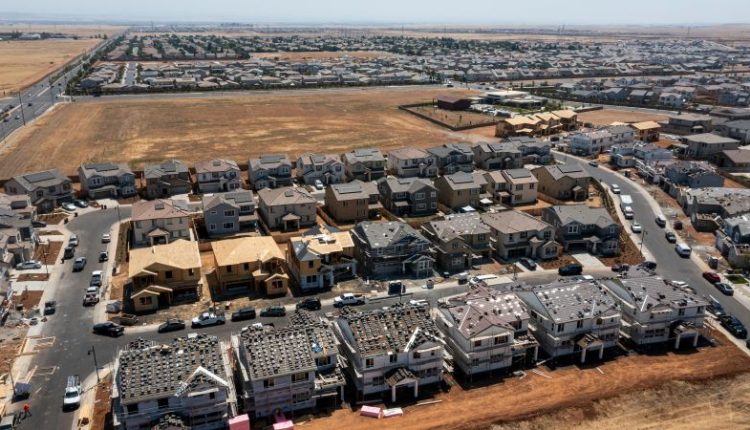It’s been another rollercoaster of a year so far for the US housing market.
Elevated mortgage rates and home prices have pushed prospective homebuyers to the sidelines. In addition, homeowners have been reluctant to put their properties on the market and risk potentially forfeiting the ultra-low mortgage rates they locked in during the pandemic.
That’s created the perfect storm for a housing market that’s been more or less frozen. But anticipation that the Federal Reserve will start cutting interest rates soon is breathing new life into it.
The standard 30-year fixed-rate mortgage started to fall earlier this year and recently plunged to its lowest level in more than a year, according to data from mortgage financing giant Freddie Mac. As a result, an influx of homeowners rushed to refinance their mortgages.
Then another piece of encouraging news came Friday: New home sales jumped by more than 10% last month to the highest level since May 2023, the Census Bureau and Department of Housing and Urban Development reported.
On top of that, existing home sales also rose last month, albeit by a much more modest 1.3%, according to data from the National Association of Realtors. That broke a four-month streak of declining sales.
But for many people looking to finally own a home, the housing market looks just as bleak as it did when the Fed was still hiking rates last year.
Existing home prices were 4.2% higher in July compared to a year ago after rising for the 13th consecutive month, NAR reported Thursday. In order to qualify for the median-priced existing single-family home, a potential buyer must have a household income of around $110,000, according to recent housing affordability data published by the real estate trade association. Three years ago, households needed to earn about $59,000 to qualify for the same type of home.
The worst part: “Affordability conditions are unlikely to improve drastically,” Wells Fargo economists said in a note this week. That’s because housing supply is still not keeping up with strong demand, they said. Coupled with the cooling labor market and stagnating wage growth, it will “likely limit the potential for a full-fledged housing market recovery.”
Lower mortgage rates should alleviate some pressure in the housing market, but it might take a while before they drop enough to provide any meaningful respite. The question right now isn’t if the Fed will lower borrowing costs — since Fed Chair Jerome Powell just gave his strongest signal of the first rate cut coming up — but rather by how much and how fast the Fed will cut rates. It’s not clear if the average, standard mortgage rate will drop below 6% this year.
The Fed doesn’t directly set mortgage rates, but its actions do influence them through the benchmark 10-year US Treasury yield. Bond yields have typically fallen at developments encouraging the Fed to cut interest rates, such as unemployment rising or inflation continuing to moderate. And they have risen at signs the Fed could keep rates on hold, such as inflation remaining stubborn.
That means there needs to be more data or speeches from central bankers suggesting lower interest rates in the future in order to make mortgage rates budge. The average mortgage rate has been essentially flat since plummeting earlier this month.
“The themes in Chair Powell’s speech were largely anticipated by the market, and I don’t expect mortgage rates to move much in response, as investors had already priced in a path for rate cuts,” Mike Fratantoni, chief economist and senior vice president of research and industry technology at Mortgage Bankers Association, said in a note Friday. “Our forecast continues to look for mortgage rates to drift down closer to 6% over the next 12 months or so.”
Even if mortgage rates tumble below 6%, that still leaves Americans ponying up for the most expensive homes in history. A big deciding factor for home prices is the supply of homes, which isn’t anywhere close to keeping up with demand. But there have been some welcome steps in the right direction: Total housing inventory at the end of July was 1.33 million units, NAR data shows. That’s 0.8% higher from June and up 19.8% from a year ago. Housing inventory has improved every single month this year so far.
A chronic lack of homes on the market is proving to be the US housing market’s key challenge because of its effect on prices. The two leading candidates for US president — Vice President Kamala Harris and former President Donald Trump — have proposed their own solutions to shore up housing supply. Trump has proposed using federal land to address the housing shortage, while Harris has called for the construction of 3 million new housing units.
Experts have told CNN previously that there really isn’t a magic fix for America’s woefully unaffordable housing market, and that a solution could take time and a lot of effort from all stakeholders.
Read the full article here

